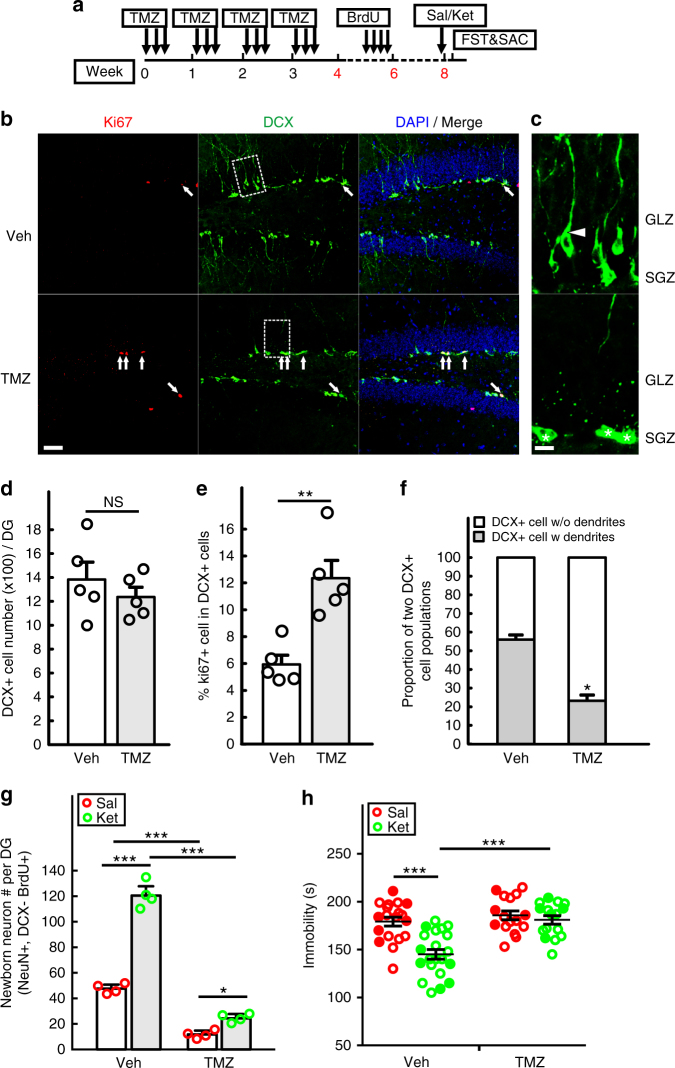Fig. 4.
Temozolomide mediated suppression of adult neurogenesis impairs ketamine antidepressant effect. a A timeline for the suppression of adult hippocampal neurogenesis by four cycles of temozolomide (TMZ). Each cycle includes single daily injections (25 mg/kg) on three consecutive days followed by a recovery period of four days. Ten days after the last cycle of TMZ treatment, mice were given four pulses of BrdU to label proliferating NPCs that were born after TMZ exposure. Eighteen days after BrdU pulses, mice were given Sal or Ket and then examined for anti-depressive like behavior in the FST 24 h later. b, c Sections from TMZ and vehicle (Veh) treated mice were immunostained with DCX (green), Ki67 (red) and DAPI (blue) for nuclei. DCX+ cells that co-express Ki67 are denoted by arrows in the confocal images. Scale bar, 50 µm. High power images of the area from the dash-line rectangle are shown in c, to highlight DCX+ cell morphology changes after TMZ treatment. Cells with dendrites (arrowheads) have migrated into the inner granular layer zone (GLZ), while cells without processes (asterisks) are still localized in the subgranular zone (SGZ). Scale bar, 10 µm. d Quantification of total DCX+ cell number in the DG (n = 5 per group, p = 0.4073 by unpaired two-tailed t-test). e Percentage of DCX+ cells that express Ki67 in the DG (n = 5 per group, **p = 0.0027 by unpaired two-tailed t-test). f The proportion of DCX+ cells with or without dendrites was quantified in the DG (n = 5 per group, ***p < 0.0001 by unpaired two-tailed t-test). g Quantitative analysis of BrdU pulse-chase for 18 days shows the number of newborn neurons (BrdU+/NeuN+/DCX−) in the DG was significantly decreased (two-way ANOVA, Tukey post hoc, ***p < 0.0001 for saline vs ketamine treatment in vehicle mice, and Veh vs TMZ group with saline or ketamine treatment; *p = 0.0444 for saline vs ketamine treatment in TMZ mice). h FST shows ketamine’s antidepressant effect is fully abolished in TMZ-treated mice (2-way ANOVA with unweighted mean analysis, Tukey post hoc, ***p = 1.299E-6 for saline vs ketamine in vehicle treated mice and ***p = 1.192E-6 for ketamine-treated mice with vehicle vs TMZ). Circles in solid color denote the data points from female mice

